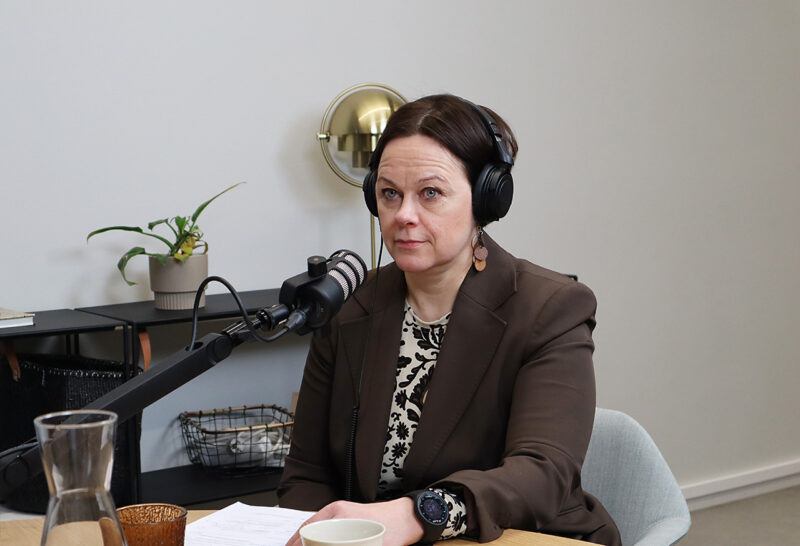New investment strategies and accounting principles needed for industrial clean transition projects

The accounting principles for clean transition projects should be able to assess a wider range of cost impacts on the environment and society while simultaneously modeling cash flows from multiple stakeholders. This is the view of Timo Kärri, Professor of Cost Management at LUT University, as discussed in the “Kumppanit” podcast by Fimpec.
Clean transition and the challenges related to its investments are areas of particular interest to Professor Timo Kärri. His research focuses on industrial cost, investment, and lifecycle models. In recent years, he has actively participated in significant research projects related to the clean transition in industry and sustainable energy production.
Kärri sees the clean transition as an unprecedented opportunity to build a new energy system and industrial society based on an entirely different way of thinking. He compares it to the IoT revolution (industrial internet), suggesting that its scale in the energy sector is at least as significant, if not greater.
“The key achievement and major aspect of the clean/green transition is that it provides companies of all sizes with a clear vision—perhaps even an imperative—on how to save the world. However, the remaining question, which affects individual projects, is the timeline: how quickly can we implement the necessary changes, and how will they be achieved?”
Timeline and financing challenges in clean transition projects
According to Kärri, the main challenge in implementing the clean transition is the timeline. The new system must be established, and emissions reduced as quickly as possible. However, industrial and technological development is evolutionary in nature and requires time, even when significant investments are made.
“This is a significant challenge, coupled with an immense need for financing—both in Finland and globally. It also poses a challenge for the global financial system, which allocates investor capital worldwide in real time.”
This challenge is also evident in Finland, where the investment environment is currently difficult, according to Kärri. A lack of clear demand visibility and limited access to financing slow down green investments. He also believes that internal factors within companies contribute to these delays.
“I don’t think companies always have a clear understanding of where the best profitability lies or where they should be looking for it. Many clean transition projects are still at such an early stage that companies must find the right combination of factors and the right location for things to fall into place.”
“Investments also involve behavioral challenges. I’ve spoken before about a ‘herd mentality’ among companies: when a few companies take the lead, momentum builds, but if one hesitates, others quickly follow suit.”
The role of technological risks
Companies planning investments must also consider technological risks. In the “Kumppanit” podcast, co-host and Fimpec’s Chief Development Officer, Panu Rahikka, highlighted that clean transition projects involve many emerging technologies.
“Everyone understands the basic principles of carbon capture or hydrogen production and processing, but there are clear technological risks. We still lack large-scale production experience for some equipment, and there aren’t many references available yet.”
Kärri agrees that technological risks affect investment decisions and investors’ willingness to commit.
“The clean transition requires new technologies that carry significant risks until large-scale pilot facilities exist. However, collaboration between experts from different fields can help mitigate and anticipate many of these risks.”
Clean transition brings new perspectives to cost management
Understanding and managing the challenges of clean transition investments require new perspectives compared to traditional industrial investments. Kärri emphasizes the importance of considering environmental and societal impacts more comprehensively, as well as recognizing the necessity of collaboration between companies.
“Currently, companies still largely rely on traditional accounting principles. However, our research suggests that green project accounting must evolve to account for environmental costs, societal impacts, and related expenses more comprehensively. It is no longer sufficient to calculate only traditional cash flows, such as capital and operational costs.”
“It is also essential to consider cooperation between companies. Right now, each company tends to focus narrowly on its own cash flow and profitability indicators. The challenge for the future is to develop seamless models that can calculate lifecycle costs across the entire value chain—from green electricity production to synthetic end products. At LUT University, we have developed an accounting model that allows for simultaneous modelling of multiple stakeholders’ cash flows.”
Investment interest exists, but government should act as a catalyst
While the podcast discusses the challenges of clean transition investments, it also highlights their significant opportunities. Rahikka notes that, based on his experience, there are investors willing to fund clean transition projects.
“This megatrend is widely believed to be inevitable, and there is an expectation that it will generate profitable business opportunities. A few years ago, there was a major investment push in wind power, and now we see growing interest in energy storage and solar power. I also believe that interest in hydrogen and its derivatives will steadily increase. There are multiple models and possibilities for hydrogen to replace fossil fuels in industry.”
To accelerate investments, both Kärri and Rahikka agree that governments need to play a role, though they caution against relying solely on public support.
“For clean transition projects, I see public funding as a type of seed money—a catalytic investment meant to attract private investors and kickstart the process. However, it’s clear that the entire transition cannot be sustained by public funding alone.”
Kärri also points out that government support is linked to competition between countries and regions, which will continue to be intense in the future. He emphasizes that state actors must remain proactive.
Additionally, Kärri highlights the potential of financing models such as Public-Private Partnerships (PPP), where the public sector collaborates with businesses through service contracts. Similarly, he suggests that long-term Power Purchase Agreements (PPA) to lock in price levels could be beneficial for all stakeholders.
“PPP is a well-established model internationally and has been used in large infrastructure projects in Finland. This approach could offer opportunities for hydrogen projects, although we have yet to see significant developments in this direction.”
Regulation is essential
Both podcast participants agree that regulation is crucial. Rahikka underscores its importance in shaping market development.
“There are EU-level directives guiding the adoption of clean solutions, such as e-fuels. However, their impact must be visible in fuel stations and industrial processes. This will help establish a market for end products and set the whole system in motion.”
Kärri hopes that Finland will take a leading role in regulatory advancements.
“This also means that municipalities and various authorities must focus on streamlining permitting processes, which has already started to happen in some areas. Some regions have made significant progress. In this sense, regulation is an essential part of the bigger picture.”
Timo Kärri appeared as a guest on the “Kumppanit” podcast with hosts Chief Marketing Officer Maiju Aaltonen and Panu Rahikka.
Listen to Kumppanit podcast episode 15: Clean Transition Is Changing Industrial Investment Strategies Please note that the podcast is available only in Finnish.


